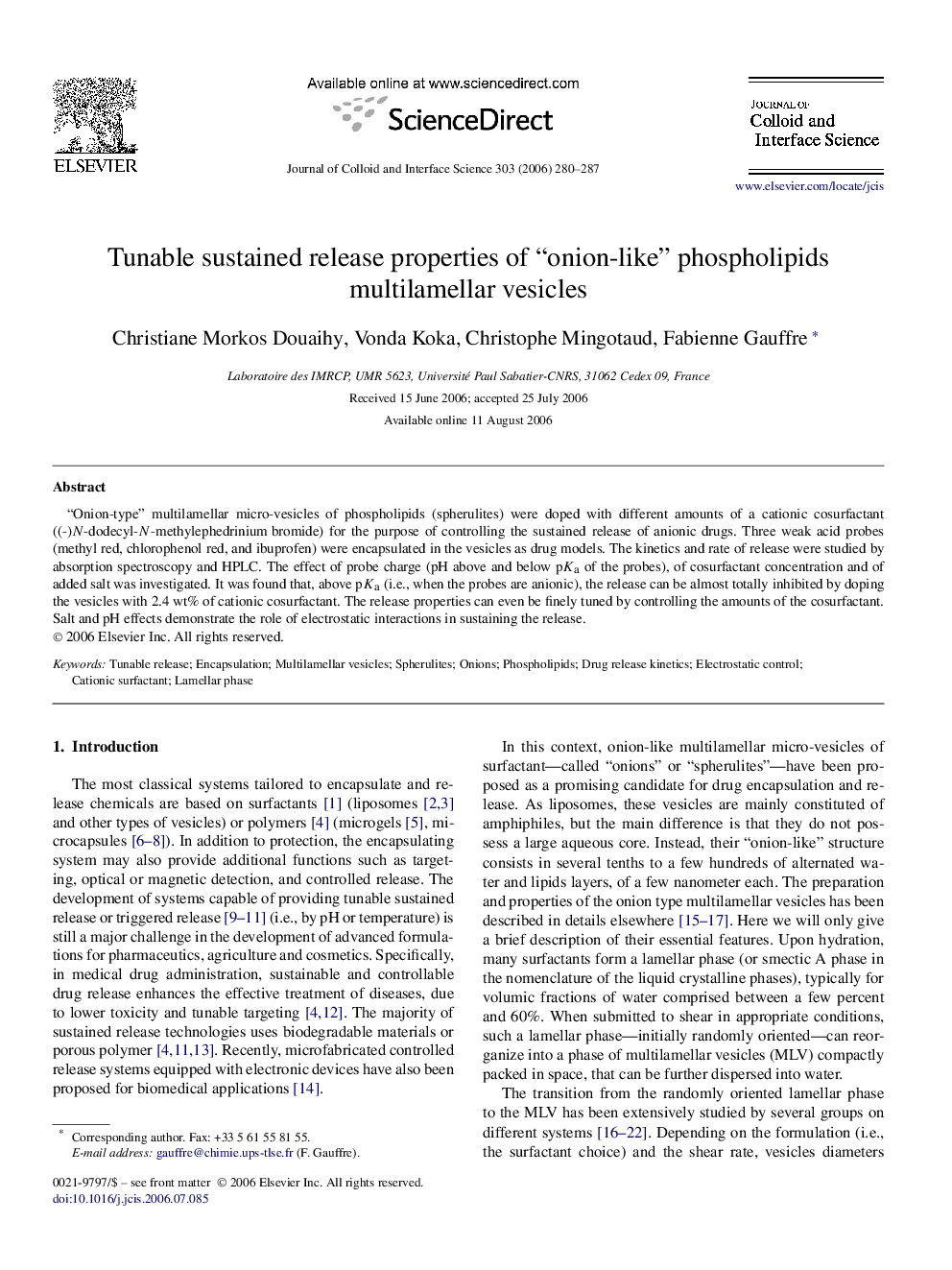| Article ID | Journal | Published Year | Pages | File Type |
|---|---|---|---|---|
| 612820 | Journal of Colloid and Interface Science | 2006 | 8 Pages |
“Onion-type” multilamellar micro-vesicles of phospholipids (spherulites) were doped with different amounts of a cationic cosurfactant ((-)N-dodecyl-N -methylephedrinium bromide) for the purpose of controlling the sustained release of anionic drugs. Three weak acid probes (methyl red, chlorophenol red, and ibuprofen) were encapsulated in the vesicles as drug models. The kinetics and rate of release were studied by absorption spectroscopy and HPLC. The effect of probe charge (pH above and below pKaKa of the probes), of cosurfactant concentration and of added salt was investigated. It was found that, above pKaKa (i.e., when the probes are anionic), the release can be almost totally inhibited by doping the vesicles with 2.4 wt% of cationic cosurfactant. The release properties can even be finely tuned by controlling the amounts of the cosurfactant. Salt and pH effects demonstrate the role of electrostatic interactions in sustaining the release.
Graphical abstractDoping “onion-like” phospholipids vesicles with dodecylephedrinium bromide (a cationic surfactant) enables to tune the release of anionic probes (e.g., ibuprofen). The kinetics of release was investigated in various pH, salt, and concentration conditions.Figure optionsDownload full-size imageDownload high-quality image (75 K)Download as PowerPoint slide
